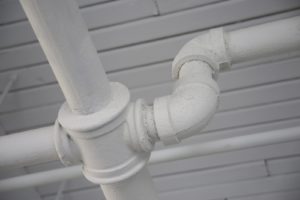 Failure of any portion of your home’s plumbing can lead to major property damage and loss of furnishings. Piping and pipe connections often fail due to age, lack of maintenance, major fluctuations in temperature, faulty components or low-quality installations. Consider the fact that much of your home’s piping is concealed beneath concrete or behind walls. Therefore, knowing the expected life cycle of your plumbing and indications of failure can help any homeowner know when it is time to replace their home’s plumbing.
Failure of any portion of your home’s plumbing can lead to major property damage and loss of furnishings. Piping and pipe connections often fail due to age, lack of maintenance, major fluctuations in temperature, faulty components or low-quality installations. Consider the fact that much of your home’s piping is concealed beneath concrete or behind walls. Therefore, knowing the expected life cycle of your plumbing and indications of failure can help any homeowner know when it is time to replace their home’s plumbing.
Why the Pipe Material Matters
Assess your home’s plumbing to determine what type of piping material is installed in the home. Different materials have a different life expectancy and pose different problems. When you purchased your home, an appraisal or inspection report would have detailed the type of piping material in your home. For instance, historic homes used clay, which deteriorates much more quickly than modern materials. Each pipe material has a lifespan:
- Copper: 50+ years
- Brass: 40 to 45 years
- Cast Iron: 75 to 100 years
- Galvanized Steel: 20 to 50 years
- PVC piping can last indefinitely.
While these long-life cycles may look impressive, you also need to consider the pipe joints, fittings and mechanical components that connect your plumbing to household fixtures. Aged or faulty fixtures and compromised connections can lead to leaks and water backups.
Signs That Your Plumbing Is Failing
The most obvious sign that your home has a plumbing problem will be obvious pipe cracks, corrosion or leaks from piping.
Small Changes, Big Impact
Want to make your house look rich but don’t have the funds to decorate like a millionaire? These simple tricks can make it look like you spent a lot more than you really did.
But other signs will also show plumbing issues: wet baseboards or the area behind dishwasher or sinks, water-stained or warped flooring, and water tubing that is rust-colored can indicate leaking or corroding pipes.
Low water pressure can indicate a clogged drain or a leak downstream from the fixture.
A gurgling or rattling sound from your piping may indicate a pipe blockage that is trapping air. An inspection of crawl spaces and enclosed areas for dampness or mold is also an indication of a pipe leaking. And slow-moving drains should always be cleared with a drain cleaner or plumber’s ‘snake’, as it indicates a blockage in the pipeline.
Repair or Replace?
Dislodging material in blocked pipes, replacing faulty fixtures and pipe connectors, and even replacing faulty exposed pipes are all projects that don’t require a plumber. Keep in mind when the problem is not exposed piping, but concealed underground or behind a wall, be prepared for demolition and floor/wall repairs.
A good rule of thumb is to replace plumbing when you renovate your kitchen, bathroom or basement. You can keep the cost low by replacing only the exposed piping if no other sign of leaking water is present. But if walls will be removed, inspect hidden pipes and joints to determine if they should be fixed or replaced.

Recent Comments